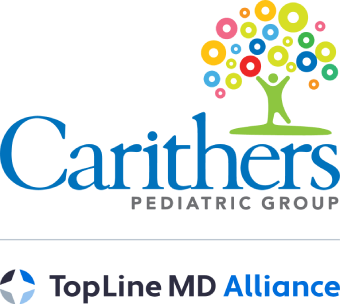We know. Even reading the word lice can make you feel itchy. There is a dreaded call from school when a student or group has lice. It poses little danger to your child but can make anyone feel uneasy. While there is often no way to prevent the possibility altogether, understanding how lice operate can help you avoid your child getting them or make getting rid of them easier.
At Carithers Pediatric Group, we help with any medical situation your child may face, including lice. We know that handling this situation can seem complicated, so we want to ensure you have the necessary resources to take it on!
Understanding Characteristics of Lice
What Are Lice?
Lice are insects without wings that feed on human blood. However, someone can often encounter two different lice on their body. These are head lice and body lice. Head lice are found on the scalp, with spots that make it easier to see where the hair is less thick. Body lice often are found in bedding and clothing.
For children and students, head lice are the most common form of lice. This is due to students’ proximity and shared belongings throughout the school day. You may not even realize a student has them, creating a problem before anyone can stop it.
How Does It Spread?
Lice can spread through close contact and even transfer through various belongings. Children playing close together and swapping jackets and such at school may pass the lice back and forth without realizing it. Often, teachers and parents cannot stop the spread of lice soon enough because they have no way of knowing until it is discovered on a child’s head.
What Are The Symptoms Of Lice?
There are many symptoms of lice that you may start to notice in your child. The main thing you will begin to notice is your child itching their head. They also may complain of a tickling feeling from the lice moving around in the hair. While these are two significant symptoms to look out for, you may even begin to see the lice on your child’s scalp and around their ears.
How Do You Treat It?
Once you have discovered lice on your child’s head, keeping them home from school until the lice are gone is essential. This way, you do not have to worry about the lice transferring to other children as well. There are multiple ways to treat head lice, such as nonprescription products and topical prescriptions. Start with the OTC topical treatments followed by picking out the nits from the hair. If they do not work, we can call in a topical medicine. There is a salon that will wash and pick the nits out, guaranteed as well- call us for details.
Alongside these methods, you can practice self-care ideas at home that do not include medication. These include washing all of the bedding and clothing that could contain lice. This also includes washing anything you have used on the child’s hair, including combs and hairbrushes. Putting the hair up in ponytails or buns and hair sprayed for girls or cutting/shaving very short for boys can help.
Handling insects in your child’s hair is something no parent wants to encounter. The more you understand how lice can spread, the better your chance of avoiding it. While it does not do your child any harm, it can be irritating and cause school absence. With the school year still in full swing, we are here to keep those incidents to a minimum through education. Do you think your child may have lice? We can help you figure it out and determine the best course of action moving forward. Check out our website or give us a call for more information.



